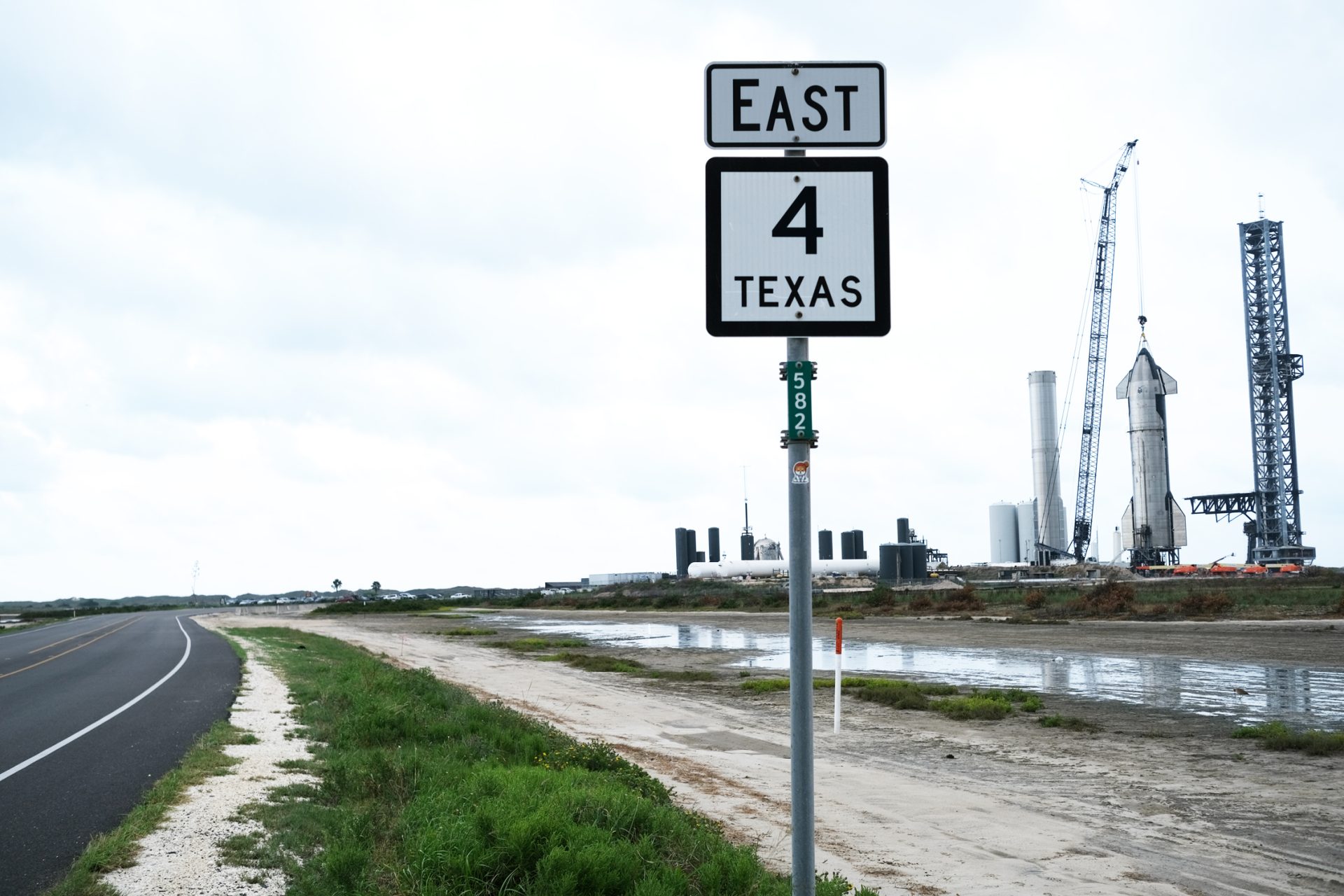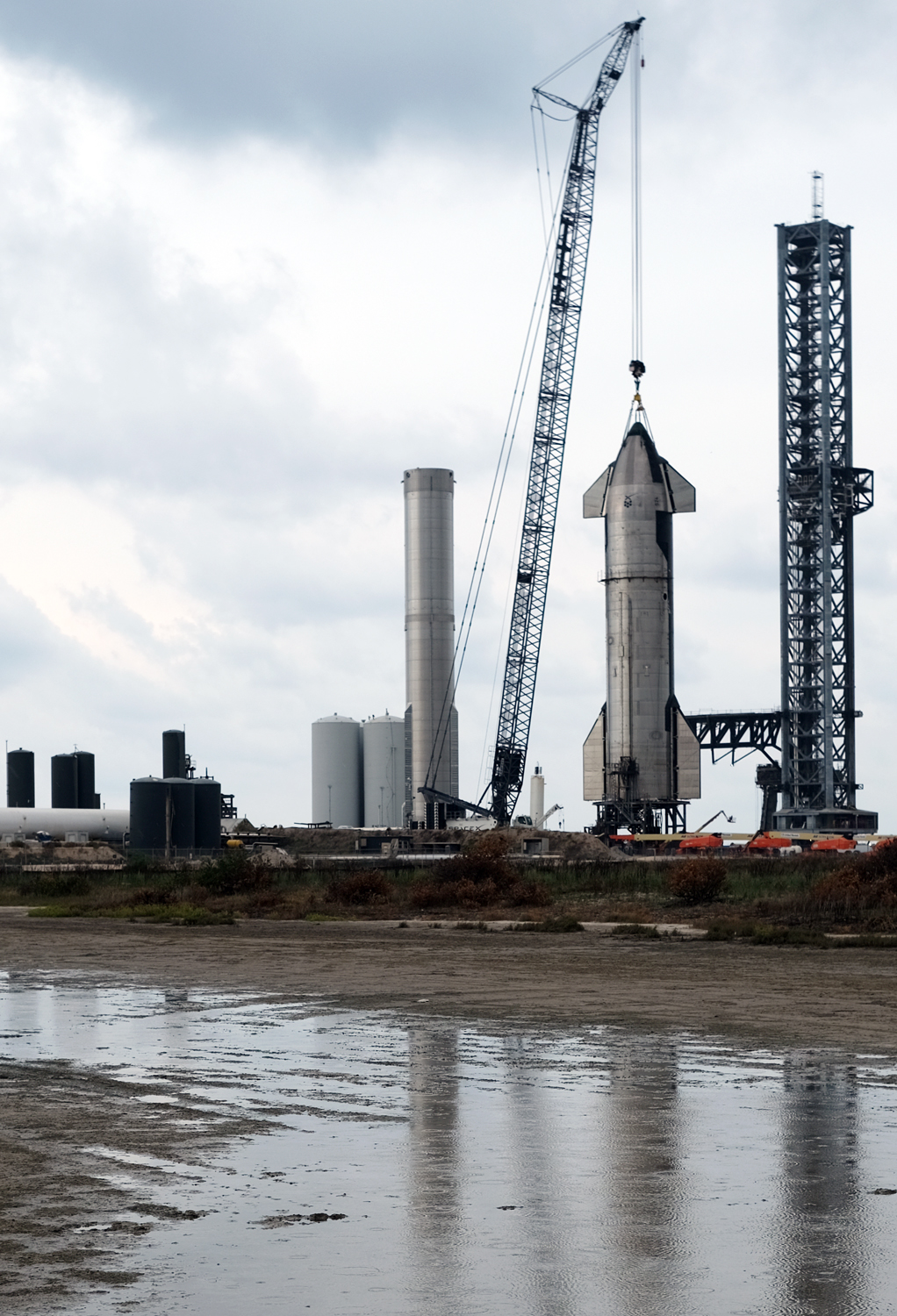SpaceX conducted the first successful, full-scale “wet dress rehearsal” test of a Starship/Super Heavy on Jan. 23 at the Boca Chica/Starbase launch complex, clearing the way for the next big test: a static fire of all 33 of the Super Heavy’s liquid oxygen and liquid methane-fueled Raptor engines simultaneously.
The wet dress rehearsal entails a countdown without a launch, including completely filling the spaceship (Starship SN24) and booster (Super Heavy BN7) with propellant. More than 10 million pounds of cryogenic (super-cooled) propellant was loaded into SN24’s and BN7’s tanks, causing the exterior of Starship and Super Heavy to become coated in white frost.
The SN24, its belly covered in black thermal tiles, was stacked atop the BN7 at site’s integration/launch tower for the test. The combined vehicles stand nearly 400 feet tall, not counting the height of the launch mount.
“Starship completed its first full flight-like wet dress rehearsal at Starbase today,” SpaceX tweeted following the test. “This was the first time an integrated Ship and Booster were fully loaded with more than 10 million pounds of propellant.”

The company tweeted that the test “will help verify a full launch countdown sequence, as well as the performance of Starship and the orbital pad for flight-like operations.”
It’s all leading up to Starship’s planned first orbital test flight, which SpaceX began preparing for in 2001. The test calls for the booster to separate from Starship about 170 seconds after launch and land in the Gulf roughly 20 miles offshore. The Starship would continue on through the Florida Straits and achieve orbit briefly before landing in the Navy’s Pacific Missile Range Facility some 60 miles north of Kauai, Hawaii.
On Jan. 20 the Federal Communications Commission granted Special Temporary Authority for SpaceX to communicate with Starship during the experimental orbital demonstration flight and vehicle recovery test. SpaceX is still waiting for the Federal Aviation Administration to issue a launch license for the flight.
NASA is paying close attention to events at Boca Chica since the agency awarded SpaceX a $2.9 billion contract to develop Starship as the Human Landing System (HLS) that will put U.S. astronauts on the moon for the time in a half century as part of NASA’s Artemis program.

The initial contract was awarded in April 2021. On Nov. 15, 2022, NASA announced a $1.15 billion modified contract containing “Option B,” an upgraded version of the Starship HLS that includes a second crewed demonstration moon landing by SpaceX.
Meanwhile, SpaceX continues construction at the Kennedy Space Center in Florida on an integration/launch tower nearly identical to the one at Boca Chica. Musk said last March that KSC likely would serve as the “main operational launch site” for Starship missions while Boca Chica operations would be geared toward advanced research-and-development for testing new designs and versions of Starship.
SpaceX founder and CEO tweeted earlier on Jan. 7 that the first orbital flight could happen as early as next month.
“We have a real shot at late February,” he tweeted. March launch attempt appears highly likely.”




